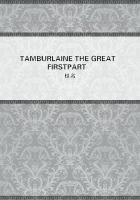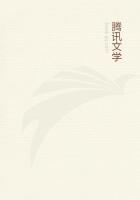[81] Arab.'Ushari.'Old Purchas (vi.,i. 9) says there are three kinds of camels (1 ) Huguin (=Hejin) of tall stature and able to carry 1,000 lbs. (2) Bechete (=Bukhti) the twohumped Bactrian before mentioned and,(3) the Raguahill (Rahil) small dromedaries unfit for burden but able to cover a hundred miles in a day. The'King of Timbukhtu'(not'Bukhtu's well'pop.
Timbuctoo) had camels which reach Segelmesse (Sijalmas) or Darha,nine hundred miles in eight days at most. Lyon makes the Maherry (also called ElHeirie=Mahri) trot nine miles an hour for a long time. Other travellers in North Africa report the Sabayee (Saba'i=seven days weeder) as able to get over six hundred and thirty miles (or thirtyfive caravan stages=each eighteen miles)
in five to seven days. One of the dromedaries in the'hamlah'or caravan of Mr. Ensor (Journey through Nubia and Darfoora charming book) travelled one thousand one hundred and ten miles in twenty seven days. He notes that his beasts were better with water every five to seven days,but in the cold season could do without drink for sixteen. I found in AlHijaz at the end of August that the camels suffered much after ninety hours without drink (Pilgrimage iii. 14). But these were'Judi'finehaired animals as opposed to'Khawar'(the Khowas of Chesney,p. 333),coarsehaired,heavy,slow brutes which will not stand great heat.
[82] i.e. Fortune so willed it (euphemistically).
[83] The'minaret'being feminine is usually compared with a fair young girl. The oldest minaret proper is supposed to have been built in Damascus by the Ommiade Caliph (No. X.) AlWalid A.H. 8696 (=705715). According to Ainsworth (ii. 113) the second was at Kuch Hisar in Chaldea.
[84] None of the pure Badawi can swim for the best of reasons,want of waters.
[85] The baser sort of Badawi is never to be trusted: he is a traitor born,and looks upon fair play as folly or cowardice.
Neither oath nor kindness can bind him: he unites the cruelty of the cat with the wildness of the wolf. How many Englishmen have lost their lives by not knowing these elementary truths! The race has not changed from the days of Mandeville (A.D. 1322) whose'Arabians,who are called Bedouins and Ascopards (?),are right felonious and foul,and of a cursed nature.'In his day they'carried but one shield and one spear,without other arm :'now,unhappily for travellers,they have matchlocks and most tribes can manufacture a something called by courtesy gunpowder.
[86] Thus by Arab custom they become friends.
[87] Our classical term for a noble Arab horse.
[88] In Arab.'Khayl'is=horse;Husan,a stallion;Hudud,a brood stallion;Faras,a mare (but sometimes used as a horse and meaning'that tears over the ground'),Jiyad a steed (noble);Kadish,a nag (ignoble);Mohr a colt and Mohrah,a filly. There are dozens of other names but these suffice for conversation [89] AlKatul,the slayer;AlMajnun,the mad;both high compliments in the style inverted.
[90] This was a highly honourable exploit,which would bring the doer fame as well as gain.
[91] This is a true and lifelike deion of horse
stealing in the Desert: Antar and Burckhardt will confirm every word. A noble Arab stallion is supposed to fight for his rider and to wake him at night if he see any sign of danger. The owner generally sleeps under the belly of the beast which keeps eyes and ears alert till dawn.
[92] Arab.'Yaum al tanadi,'i.e. Resurrectionday.
[93] Arab.'Bilad alSudan'=the Land of the Blacks,negro land,whence the slaves came,a word now fatally familiar to English ears. There are,however,two regions of the same name,the Eastern upon the Upper Nile and the Western which contains the Niger Valley,and each considers itself the Sudan. And the reader must not confound the Berber of the Upper Nile,the Berderino who acts servant in Lower Egypt,with the Berber of Barbary: the former speaks an African language;the latter a'Semitic'(Arabic) tongue.
[94]'Him'for'her.'
[95] Arab.'Saibah,'a shecamel freed from labour under certain conditions amongst the pagan Arabs;for which see Sale (Prel. Disc. sect. v.).
[96] Arab.'Marba'.'In early spring the Badawi tribes leave the Rasm or winteringplace (the TurcoPersian'Kishlak') in the desert,where winterrains supply them,and make for the Yaylak,or summerquarters,where they find grass and water. Thus the great Ruwala tribe appears regularly every year on the eastern slopes of the AntiLibanus (Unexplored Syria,i. 117),and hence the frequent'partings.'
[97] This'renowning it'and boasting of one's tribe (and oneself) before battle is as natural as the warcry: both are intended to frighten the foe and have often succeeded. Every classical reader knows that the former practice dates from the earliest ages. It is still customary in Arabia during the furious tribal fights,the duello on a magnificent scale which often ends in half the combatants on either side being placed horsde combat. A fair specimen of'renowning it'is Amru's Suspended Poem with its extravagant panegyric of the Taghlab tribe (p. 64,'Arabian Poetry for English Readers,'etc.,by W. A. Clouston,Glasgow: privately printed MDCCCLXXXI.;and transcribed from Sir William Jones's translation).
[98] The'Turk'appeared soon amongst the Abbaside Caliphs.Mohammed was made to prophecy of them under the title Banu Kanturah,the latter being a slavegirl of Abraham. The Imam Al Shafi'i (A.H. 195=A.D. 810) is said to have foretold their rule in Egypt where an Ottoman defended him against a donkeyboy. (For details see Pilgrimage i. 216 ) The Caliph AlMu'atasim bi'llah (A.D. 833842) had more than 10,000 Turkish slaves and was the first to entrust them with high office;so his Arab subjects wrote of him:
A wretched Turk is thy heart's desire;
And to them thou showest thee dam and sire.















